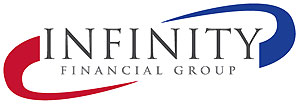All company owners dream of the ultimate exit / selling a company that he has spent decades building. As such, in the years leading up to the sale, most owner-operators become marketing experts – articulating the strengths of their company, showing would-be buyers the potential for continued growth in order to demonstrate that buying his or her Company would be a great bet.
What most owners fail to recognize, however, is that rather than focus solely on the good, they should look closely at the bad. A vital exercise in preparing a company for sale is to stamp out the ways in which the business may be destroying value on its way there. There are multiple warning signs that this is happening and that a business is at risk for selling for much less than expected or not at all.
Your business is too dependent on new sales
As a means of survival, many businesses operate with a transactional mindset. You seal the deal and quickly move on to the next prospective sale, while putting little effort into client retention. However, business growth expert, Dorie Clark, recently noted in a Forbes article that if your business is driven by new sales versus long-term contracts, the value of your company will be driven down due to long-term risk potential[1]. Therefore, contractually recurring revenues from contracts for annual maintenance, annual licensing fees, retainer fees, technology licenses, and others are much more powerful value-drivers for buyers.
Your business is too dependent on an indistinguishable commodity
From a buyer’s perspective, a business with a lack of unique value proposition (UVP) and no real differentiation in the market increases risk and decreases value. A commodity product or service that is difficult to defend with lower margins and profit potential will be consistently challenged by the market.
A prime example of the impact of UVP on business valuation can be seen in the recent acquisition of microchip manufacturer, Altera by industry behemoth, Intel. In the wake of the deal announcement, many pointed to Altera’s success in creating high barriers of entry leading it to achieve some of the highest margins in its industry.
Inked at $16.7 billion, the Altera acquisition is now the largest in Intel’s history. Since the announcement, Altera’s market cap has reached $15.52 billion and Intel’s stock price has increased by 7.2%.
Your business is reliant on you
While you may see it as a positive that you’ve been integral to the business during its growth years, a sale process is the time to position the business to be able to run without you. Owner-dependent companies are often considered knowledge-intensive firms, where a significant amount of unwritten knowledge lies with the owners. With no system in place to transfer this intellectual capital to the buyer, the price, marketability and deal structure of a sale will be negatively impacted with the increased risk perception of the buyer.
The more important the owner is to the day-to-day operation the more the valuation is impacted. Having a team below the owner to take the load from owner dependence the better off it is dealing with this issue. However, the best way to mitigate this issue is with a structure whereby the owner stays running the business while retaining an equity state in the business for a defined period of time under defined and negotiated terms. A highly experienced Consultant / Investment Banker will be most important for these negotiations.
Your business is in a market with no potential
According to a recent report in Gigaom, another issue is that your business is in a narrow market segment, which increases the buyer’s risk and negatively impacts your valuation. For instance, the best case scenario for a limited market business is that a buyer feels modifications can increase your valuation on a post acquisition performance basis. However, even with 100% market penetration, your earning potential is still capped.
In an interview with Gigaom, Martin Wolf, founder and president of his namesake middle market IT M&A firm, noted that a narrow, limited market segment is at risk of acquisition windows for larger companies based on economic conditions. Wolf used a hypothetical example with Oracle to demonstrate his point about how a larger corporation can reduce the value of a market segment.
For instance, if Oracle acquires your competitor, it makes a play into your segment by leveraging its product line or services as complementary sales assets. However, by acquiring these complementary assets, Oracle also buys invaluable partnerships and customer relationships, thereby reducing the value of all companies in that segment.
Your business is too dependent on a few customers
If your business lacks customer diversity or high client concentration, it’s negatively valued in the acquisition market as the risk factors increase. Should a customer discontinue his or her affiliation with your company, revenues will be significantly affected.
“The more power any outside force has over the performance of the business, the riskier it is,” he argued. “For instance, if a client represents more than 20 percent of revenue, multiples typically start to drop.”
Ultimately, in these situations, if you can negotiate the sale of your business, you may receive a down payment for the value of your business assets. However, you may also be compelled to take the remaining value in a seller note, or an earn-out based on future performance.
[1] Axial – June 2015
